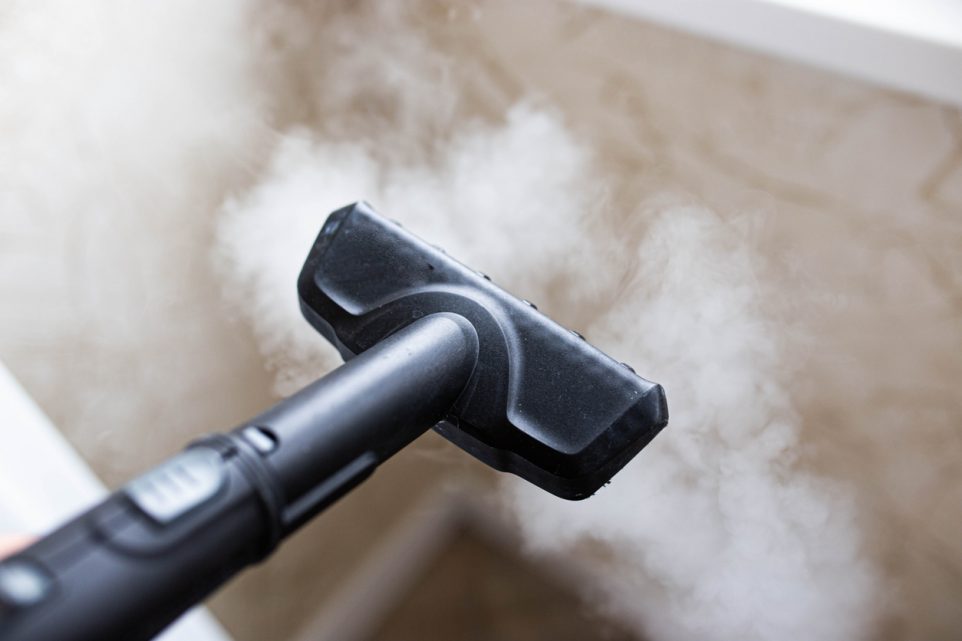Are Steam Cleaners Better at Cleaning Floors than a Mop?

Traditional dry mops have been a staple in my cleaning drawer for years. They’re reliable and effective against dust, spills, and other everyday messes. With a handle almost twice as long as some modern alternatives, they cover large areas quickly, making them a go-to for efficient cleaning.
But when traditional mops don’t cut it for tougher, dried-on dirt, the steam cleaner steps up to the plate. This device revolutionizes the task of cleaning floors with the simple yet effective power of steam. Just fill the device with distilled water, wait a brief moment for it to heat up, and then watch as it effortlessly lifts dirt off the floor—both satisfying and efficient.
The steam mop is a game-changer for anyone looking to deep clean their floors without harsh chemicals. As it glides over the floor, the steam mop releases a steady stream of hot steam that cuts through grime and sanitizes surfaces, killing bacteria and leaving the floor not just clean but hygienic. Its design is typically sleek and agile, making it easy to maneuver around furniture and into corners, which might be tricky with a bulkier traditional mop.
One of the biggest advantages of using a steam mop is the minimal drying time involved. The heat from the steam evaporates quickly, meaning the floors dry faster than they would with a traditional mop. This feature is particularly useful in homes where safety is a concern, as it reduces the risk of slips on wet floors.
After each use, I make sure to empty the tank of any leftover water to keep the system free from buildup. The mop pads, which attach to the bottom of the unit, are just as easy to care for. I usually toss them in the washing machine after cleaning, ensuring they are fresh and ready for next time. Steam cleaners prove to be an excellent solution for those particularly challenging cleaning tasks that require a bit more power. They not only clean effectively but also maintain a level of ease and efficiency that traditional cleaning tools can’t match.
An Unbiased Comparison
When it comes to choosing between a traditional mop and a steam cleaner, it boils down to the specifics of your cleaning needs. Traditional mops are excellent for day-to-day cleaning. They’re great for picking up loose debris, dust, and minor spills quickly across large floor areas. Their straightforward design and mechanical simplicity make them an enduring choice for routine cleaning. With a good-quality mop and a bit of elbow grease, you can effectively maintain clean floors regularly.
However, when the challenge involves more ingrained dirt or areas that need sanitizing, the steam cleaner truly excels. The steam mop’s ability to reach high temperatures allows it to break down sticky or dried-on spills with ease, something that a traditional mop might struggle with unless you resort to scrubbing and using cleaning agents. Moreover, the heat from the steam ensures that most germs and bacteria on the floor surface are killed, which is a significant advantage for households concerned about hygiene.

An important aspect of using a steam cleaner is that it leaves floors almost instantly dry. This is a stark contrast to traditional mops, which may leave a damp residue that takes longer to dry and could potentially attract more dirt or even slip accidents. The steam cleaner’s quick-drying feature not only enhances safety but also convenience, particularly in homes with children or pets who can’t always wait for floors to dry.
Another factor is the ease of maintenance. Steam cleaners typically require less physical effort to achieve deeper cleaning results. They glide over surfaces, requiring less physical exertion from the user, whereas traditional mops might require more effort to achieve similar results, especially when dealing with more challenging messes.
Areas of Your House You Should Never Steam Clean
While I love my steam cleaner, there are some parts of my house I will never use it in.
Firstly, painted surfaces and unsealed floors. If you’ve got walls or furniture coated in water-based paint, the heat from a steam cleaner can cause the paint to dry out, leading to peeling or cracking – not the look you’re going for. Unsealed wood is particularly vulnerable to damage from steam cleaners as it may warp, leading to water stains or even mold growth.
Also, be cautious around cold window glass. Steam cleaning windows might seem like a good idea to get them sparkling, but if there’s a significant temperature difference—like on a chilly day—the hot steam could cause the glass to crack or shatter.
I also keep the steam cleaner away from upholstery, especially velour, which can easily get damaged or discolored from high temperatures. Similarly, various porous surfaces such as bamboo, marble, and certain types of masonry should also avoid steam cleaning. These materials can soak up moisture, potentially leading to mold or structural damage.
If you are trying to get stains out of a velvet or a velour couch, here’s an easy hack you can follow that’ll make your furniture look like new without damaging the upholstery:
@mommylifesquad These potty stickers made potty training so much easier! #pottytrainningmom #pottytrainghack #pottystiker #toilettrained #toddlermom ♬ original sound – Mommy Life Squad
And sadly, carpets. While it might be tempting to tackle a dirty carpet with a steam cleaner, these devices aren’t designed to extract water efficiently. This can leave your carpet damp too long, creating a breeding ground for mold and mildew. I will usually vacuum my carpet and occasionally use a pet hair remover to get those stubborn dog hairs out of it. For tougher stains, spot-cleaning is the way to go:
Decades of Combined Expertise
Best Buy Guidebook is a culmination of online publishing lessons learned. From SEO to paid ads, our team has experienced the highest of highs and the lowest of lows. Our goal now is simple: Arm readers with the most information possible.
